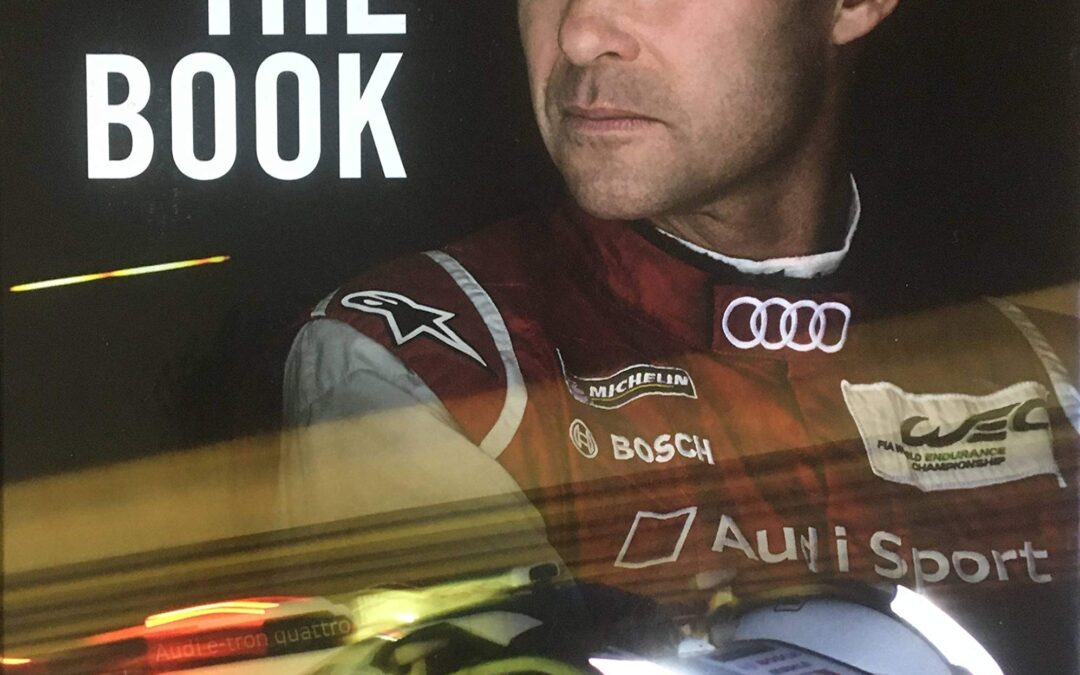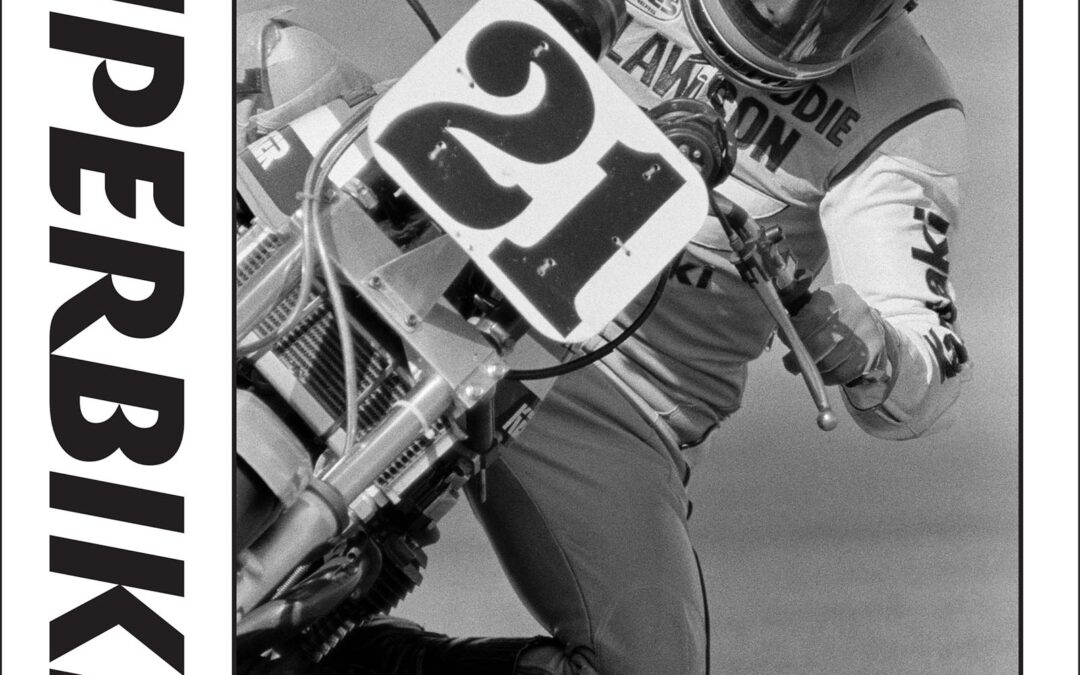
Superbike racing is a global business built on decades of dedicated partnerships among manufacturers, promoters and teams resulting in successful domestic and international championships. In the mid-1970s, however, this popular category of production-based four-stroke competition was in its infancy.
In “Superbike: An Illustrated Early History,” renowned technical writer Kevin Cameron and
acclaimed photographer John Owens chronicle the transition from the twin-cylinder BMWs,
Ducatis and Moto Guzzis set against wobbling and weaving first-generation Japanese fours to a
second wave of more raceworthy machines that ultimately led to the sportbike revolution.
Owens shot the black-and-white photographs published in this beautifully designed and
produced 192-page hardcover book at five of the tracks that dotted the U.S. motorcycle
road-racing landscape at the time: Daytona International Speedway, Bryar Motorsports Park,
Laguna Seca Raceway, Pocono International Raceway and Road America.
Eddie Lawson, Wayne Rainey and Freddie Spencer—three Americans who went on to win a
combined 10 250cc and 500cc Grand Prix world titles—figured prominently in the “sit-up” era of
AMA Superbike. Throughout the book, Cameron and Owens provide insights and images of
riders, crew members and machines difficult to replicate in today’s veiled paddocks.
“The desire to go fast, brake, turn and accelerate isn’t that complicated,” Cameron writes in the
opening pages. Yet this book clearly illustrates and uniquely explains the challenges that all
involved—from the manufacturers, to the teams and, ultimately, to the riders—faced in their
attempts to achieve those goals.
ABOUT THE AUTHORS
Kevin Cameron is a former tuner specializing in racing two-strokes and is widely recognized for
his ability to reduce deeply technical subjects to their elemental form. Kevin has written for
numerous publications. He has also authored several books on engineering and performance.
John Owens has photographed automotive and motorcycle competitions since 1975. John has
covered a range of events in the U.S., Europe and Japan, including the 24 Hours of Le Mans,
Indianapolis 500 and Daytona 500, as well as the Isle of Man Tourist Trophy races.

Lightning Strikes—The Lockheed P-38 tells the full story of one of the most successful and versatile aircraft of the Second World War. The P-38 (including its F-4 and F-5 photo reconnaissance models) eventually served with all the USAAF’s numbered overseas air forces, from early 1942 to VJ Day. The book describes the Lightning’s design and its technical details as it gradually evolved and improved, from the original XP-38 to its final variant, the P-38L-5. The main focus is on its service in the combat theaters, from the frigid, windswept Aleutian Islands in the North Pacific to the steaming jungles of the South Pacific and Southeast Asia, the burning sands of North Africa and the more temperate climes of Europe. All the units that flew the Lightning are included, as are the experiences of many of their pilots and ground crewmen as they fought the Japanese Empire and the European Axis. Also related are the P-38’s service with foreign (non-U.S.) air forces, its postwar commercial utilization as civilian aircraft and the surviving examples in museums around the world. The book is extremely well illustrated with nearly 400 high-resolution photographs, artworks, and graphics, and is supplemented by detailed appendices.
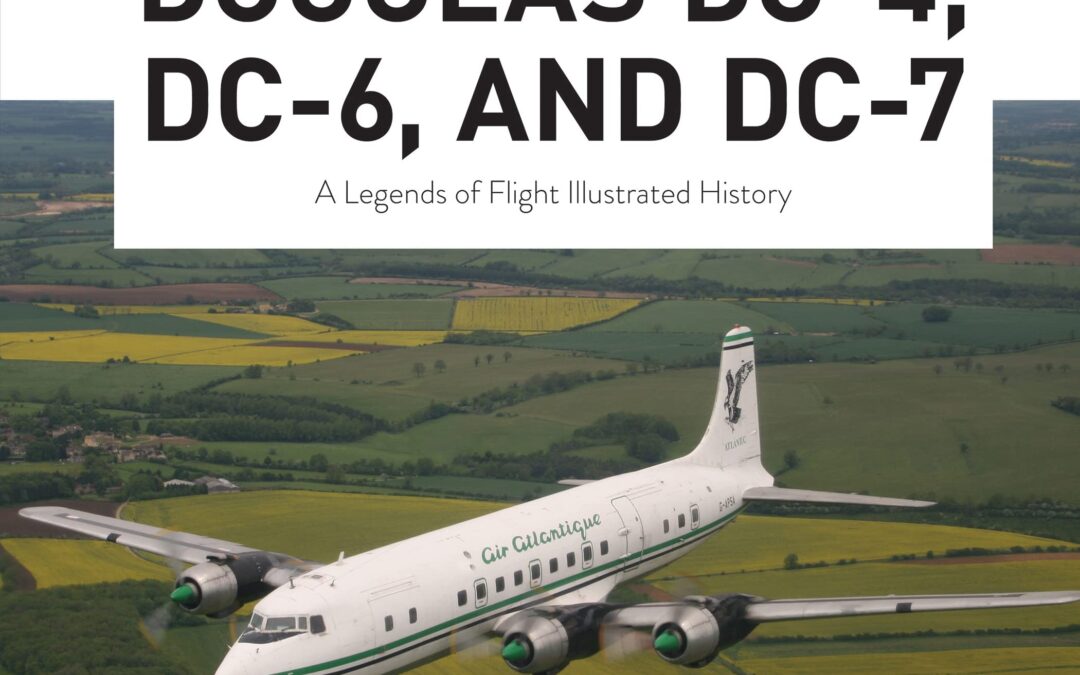
With his hugely successful commercial aircraft, including the legendary DC-3, founder Donald W. Douglas led his company to the forefront of aircraft manufacturers starting in the 1930s. “Depend on Douglas” was the company motto, and the company founder stood behind it with his name. Between 1945 and 1960, the DC-4, DC-6, and DC-7 four-engine “Big Prop” models were flown by many of the world’s most famous commercial airlines of the era, including Pan Am, United, American, Eastern, Delta, KLM, BOAC, Swissair, SAS, Air France, Alitalia, and Japan Air Lines. This is the history of the design, development, and operational use of the Douglas Big Props, including technical specifications and details of military variants. Period photographs bring to life the fascinating history of these early, and influential, commercial airliners, some of which still fly today.
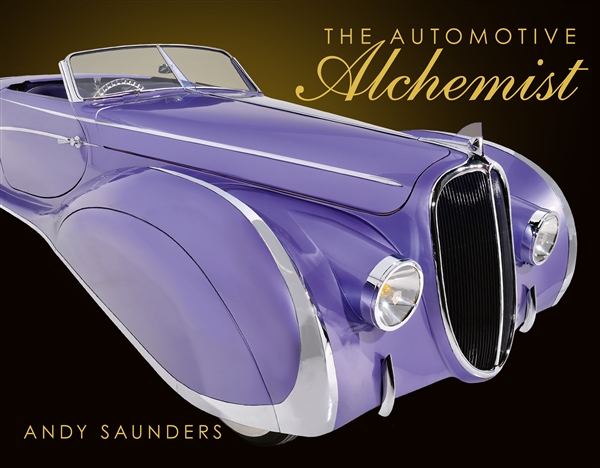
Andy Saunders’ ‘Automotive Alchemist ’ is a roller-coaster ride through the highs and lows of this charismatic man’s life. From the early years of learning the basic skills of cutting and shaping metal then painting and airbrushing, to his mature creations, restorations and the inherent genius of his designs. Andy welcomes us into his workshop and his head: not afraid to express his emotions, as he deconstructs and then rebuilds each vehicle, he lays bare his motivations, inspirations, influences, and passions. Intertwined in the narrative is the work involved in the creation of 60 cars, described here with many detailed photographs.
Forty-two of Andy’s creations now reside in museums and private collections across the globe but the most unusual fate is that of Flat Out, the Guinness Book of Records acclaimed Lowest Car in the World, which is now a coffee table in the foyer of a huge Californian corporation.
The book is not a technical ‘how to create wild custom cars’ manual. Rather it is a celebration of Andy’s joy of creation and his design genius, though tempered by personal traumas and losses. He has, on many occasions, been referred to as the British George Barris, the American “King of Kustomizers.” Unlike many biographies, this book engages the reader with its honesty and humour.
Andy Saunders grew up in Poole on the south coast of England and developed an early relationship with the building and customising of cars. His first project was finished before he was old enough to hold a British driving license.
Since that first project, his journey to become Britain’s leading and most recognisable ‘Car Artist’ has evolved. With his painstaking attention to detail and his knowledge of the styling masters from bygone eras, his creations have always been unique and, occasionally, controversial.
Never shy of turning his ideas into reality or taking unexpected opportunities to fruition, Andy has, on occasions, thrown away the accepted rule book and created some truly amazing vehicles: making a Citroën CX into a road-legal alien craft; turning Ford’s 1958 X-2000 ‘car of the future’ model into a full-sized reality and creating a Cord coupe that the factory would have been proud to call their own.
Andy has three Guinness Book of Records certifications: twice for the ‘lowest car in the world’ and once for the ‘lowest van in the world’ which remains unbeaten and has been approached by film companies and undertaken commissions for major car manufacturers. But mostly he builds whatever has inspired his creative juices from lowriders, Incantation, to shortened Minis, Mini Ha Ha; from restyling a Bentley Mulsanne, which was acclaimed by the Rolls-Royce and Bentley Owners Club as “the most beautiful coachbuilt Bentley to have been built since WWII”, to a 2CV inspired by Picasso – Picasso’s Citroën; and from his drivable version of Bertone’s Lancia Stratos Zero to his Art Deco creation of a rare 1939 Peugeot, Metropolis, inspired by Fritz Lang’s 1927 masterpiece of the same name.
During the past four decades Andy has restored Cord, Pontiac and Rolls Royce vehicles. Rescued and restored the unique and much-maligned 1957 Aurora Safety Sedan and realised an affinity with the great designer Alex Tremulis. Andy’s creations have appeared in exhibitions, on television and in magazines as far afield as Australia, Korea, America, the UK and Europe and many of his vehicles nowadays reside in museums and collections from California to Japan and from Europe to the Middle East.
And so to his latest masterpiece, Déjà: inspired by a 1930’s popular French girls name, some body panels he didn’t want or need and the pinnacle of French coachbuilding, Andy has created this Delahaye, a hand-built steel roadster. This beautiful cross between Joseph Figoni’s 165s and Jacques Saoutchik’s 175 somehow appears to be some eighty-five years late for her debut at the Paris Salon de l’Automobile.
- 464 pages
- Hard cover with dust jacket
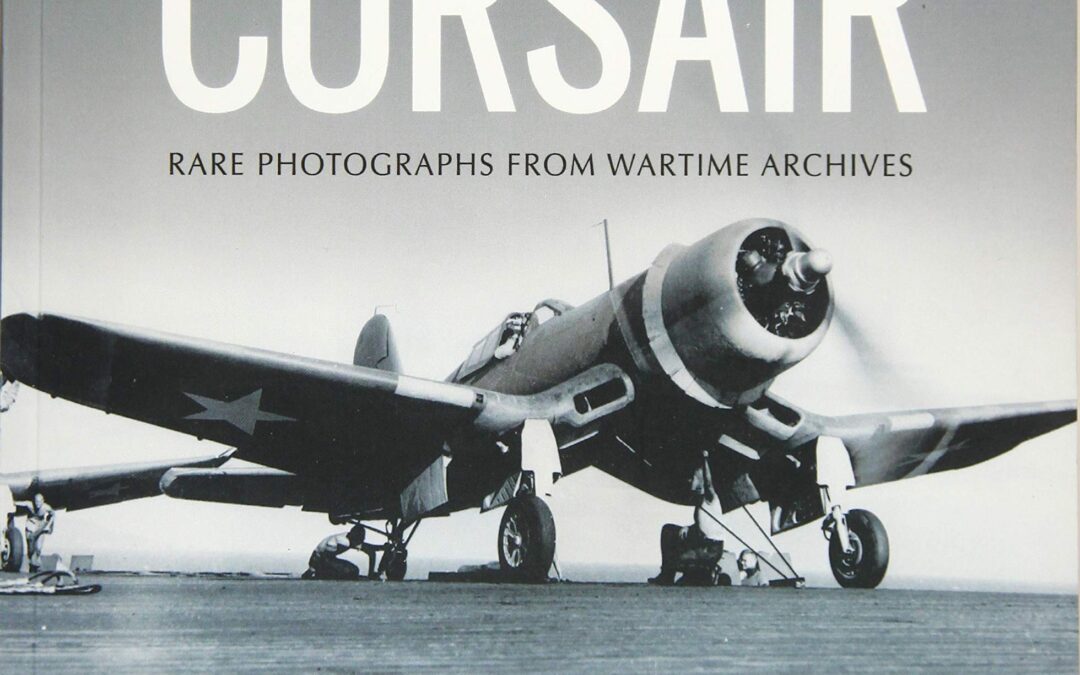
First flown in 1940, the prototype Vought F4U Corsair instantly became the fastest fighter in the world and the fastest US aircraft of any description. Powered by a huge 18-cylinder Pratt and Whitney Double Wasp engine driving an enormous 13 feet 4 inch propeller, the first Corsairs were capable of 417mph. This figure would rise to nearly 450mph in later versions.
Production began in 1941, not only by Vought but also by Goodyear and Brewster, and the F4U entered service with the US Navy in September 1942. The aircraft subsequently came to be extensively used from land and sea by the US Marines, Royal Navy and Royal New Zealand Air Force. Famous squadrons like VMF-214 ‘The Black Sheep’ and VF-17 ‘Jolly Rogers’, along with many others, maintained total ascendancy over the Japanese for the rest of the war – a remarkable achievement for a single type.
After the Second World War the Corsair remained in production and was used with distinction by the French in Indo-China and again by the US Navy in Korea. Since then Corsairs have achieved significant success in air races and more and more are being restored to fly for museums and warbird enthusiasts the world over.
This comprehensive new book combines technical information and detailed development history with a fascinating combat history told, in many cases, by the Second World War and Korean War pilots themselves. Well researched, readable and illustrated with scores of rare and previously unpublished photographs, The Vought F4U Corsair is the perfect book for any fan of the ‘bent wing bird’.
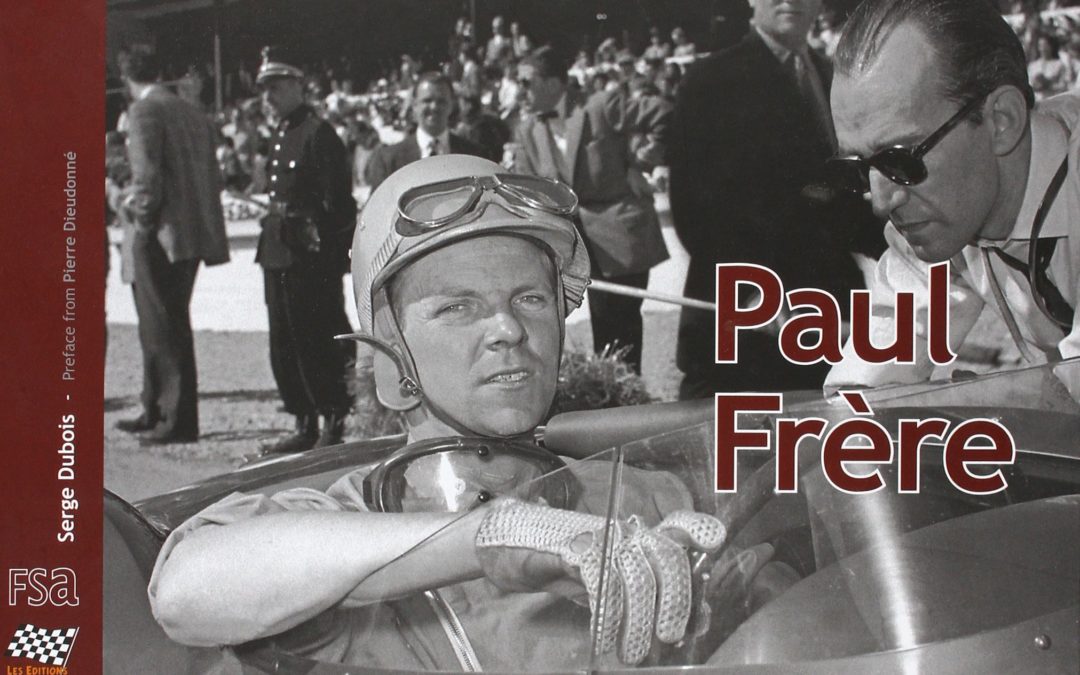
The Story of Paul Frère Journalist and Racing Car Driver
Paul Frère died in 2008 aged 91 and this is the first posthumous work on one of the world’s foremost auto journalists to appear. Still professionally active until his last months, the Belgian was a top flight racing driver in the 1950s and after winning Le Mans at the fourth attempt, retired to concentrate on journalism. Already well known as a race reporter, he became the doyen of motoring writers, his insatiable curiosity about all things automotive and mastery of detail making his copy amongst the most authoritative anywhere. Never a formally trained engineer, he could nonetheless grasp technical concepts and convey them and his ability to do this in English and German as well as his native French gave him international visibility. Author of several works on driving and racing, the way he could communicate exactly how a car was behaving meant that his skills as a consultant were always in demand; long a privileged insider at Porsche, he was also much appreciated in Japan where he struck up enduring friendships. For Mazda and Honda in particular, his assessments helped them build a European flavour into their cars.
An exceptionally modest and unassuming individual, he always appeared surprised at the reverence he inspired and the charismatic Frère always managed to make his interlocutor feel special. Now his life is celebrated in this compilation by Serge Dubois of his early life, racing career, and his activity as a journalist and adviser. The format of the book is landscape and the work is primarily pictorial. The author has had access to family and personal archives and the result is numerous previously unpublished photographs. The bulk of the text comprises reports of Frère’s races, mostly his own accounts turned into the third person; a substantial section is given over to tributes from individuals who knew and worked with him.
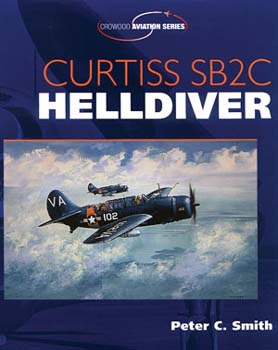
The Curtiss Helldiver was the backbone of the United States Navy’s offensive in the Pacific from 1943 until the Japanese capitulation. Despite early problems, it evolved into an effective and reliable airplane that was able to absorb severe punishment. Peter C. Smith tells the full story of this remarkable machine in this paperback reprint of a popular Crowood title. Packed with rare photographs, this lively and informative book describes an often neglected airplane.
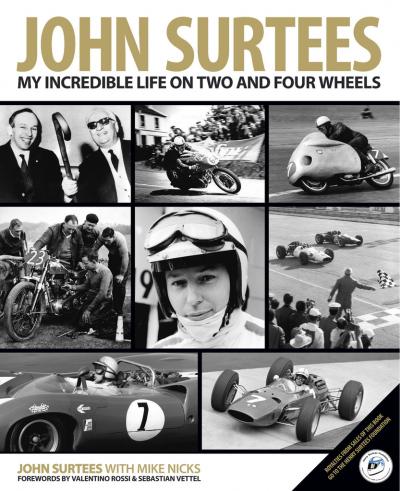
Published to mark the 50th anniversary of John Surtees becoming Formula 1 World Champion, in 1964, this long-awaited book is a photographic memoir by the only man to have won World Championships on motorcycles and in cars. Containing nearly 300 photographs from Surtees’ own collection as well as from the world’s finest motorsport picture libraries, this major book presents a complete visual record of Surtees’ life accompanied by fascinating commentary written in collaboration with co-author Mike Nicks. Royalties from sales of the book will go to the Henry Surtees Foundation, which was set up to honour the memory of John’s son Henry, who was killed in a freak accident at Brands Hatch in 2009.
• The early years (up to 1952): a childhood around motorcycle racing, apprenticeship with Vincent, then racing a Vincent Grey Flash.
• Getting established (1953–55): Moving on to ride mainly Manx Nortons, he did 86 races in one year, and in 1955 achieved his first grand prix win, in the 250cc Ulster GP on an NSU.
• The glory years (1956–60): dominating top-level motorcycle racing for five years with Italian team MV Agusta, taking seven World Championship titles on 500cc and 350cc bikes.
• The remarkable year of bikes and cars (1960): overlapping his last year of motorcycle racing with 17 car races, including four F1 World Championship events, the second of them – the British GP – bringing a second place with Lotus.
• Ferrari driver (1963–66): established in cars, he joined Ferrari, winning his first race – the Sebring 12 Hours for sports cars – and the following year becoming F1 World Champion.
• CanAm champion (1966): after recovery from a huge crash in a Lola T70 sports car and acrimonious departure from Ferrari, he bounced back in North America to win the spectacular CanAm series.
• Turning Japanese (1967–68): Honda invited Surtees to develop and drive its F1 cars, with a two-year programme in which victory in the Italian GP at Monza – Ferrari territory – was the highlight.
• Becoming a constructor (1970–78): going into single-seater racing, including F1, with Team Surtees and cars of his own manufacture; good results in F1 were sparse but Mike Hailwood won the European F2 Championship in 1972.
• The latter years (1978 onwards): fully active on the historic scene as a restorer and driver of motorcycles and cars, then nurturing son Henry’s career until the tragic accident.






